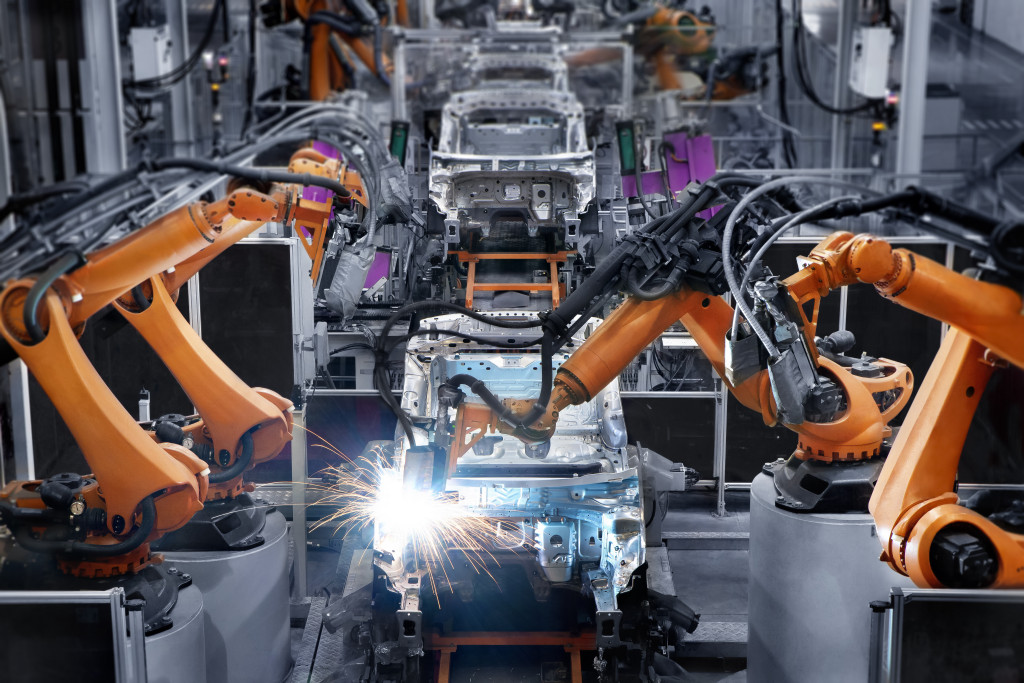There are plenty of reasons why a manufacturing business might find itself struggling. However, one of the most common reasons is that the company makes mistakes that lead to higher operational costs. In this post, we’ll look at some of the most common mistakes made by manufacturing businesses and how you can avoid them.
By understanding these mistakes and taking steps to correct them, you can streamline your operations and keep your costs under control. So, without further ado, let’s get started!
Ignoring Automation and Machinery
Some manufacturing businesses ignore automation and machinery. It is essential to embrace automation in today’s competitive marketplace and use it to your advantage. Doing so can help you save time and money while increasing efficiency and productivity.
There are several ways to automate your manufacturing process, from simple tasks like material handling to more complex ones like quality control. By understanding which areas of your operation can benefit from automation, you can make significant improvements that will save you time and money in the long run.

There are some ways to automate your manufacturing process, from simple tasks like material handling to more complex ones like quality control. By understanding which areas of your operation can benefit from automation, you can make significant improvements that will save you time and money in the long run.
Some common examples of automation and machinery that manufacturing businesses can use include:
- Material handling equipment, such as conveyor belts and sorting machines
- Automatic welding and cutting machines
- Machine vision systems for quality control
- Robotics for assembly and manufacturing
Failure to Maintain Equipment
Another mistake manufacturing brands can’t afford to make is failing to maintain equipment. Manufacturing equipment is expensive, and it’s important to keep it in good working condition. Regular maintenance will help to prevent equipment failures, which can lead to downtime and increased costs.
Remember that your manufacturing equipment helps you ensure the quality of your products, the safety of your site, and the efficiency of your workers. This is why it makes sense that you do more than just invest in the right equipment.
Equipment maintenance can also include the task of replacing certain parts as necessary. For instance, if you have air compressors, you will need to replace air compressor filters on a regular basis. This will help ensure that the air compressors are running at peak performance.
Having a plan in place for when equipment does fail is another thing that is crucial for business success. By having a backup plan in place, you can minimize the impact of a breakdown and get your business back up and running as quickly as possible.
Some common strategies for maintaining manufacturing equipment include:
- Performing regular inspections and repairs
- Using quality parts and lubricants
- Installing safety features
- Educating employees on proper use and safety procedures
Not Tracking Inventory
Poor inventory tracking can be another costly mistake made by manufacturing businesses. If you don’t track your inventory, you won’t know what you have or how much it’s worth. This can lead to wasted time and money as you search for items that are no longer in stock or try to sell products that are no longer available.
In order to properly track your inventory, you need to create a system that is both efficient and easy to use. This means developing a process that allows you to quickly and easily update your inventory as products are sold or added. It also means having a reliable way to locate each product.
Many businesses use barcodes and scanners to help with inventory tracking. You can use such technology to track both raw materials and finished products. By having a barcode for each item, you can quickly scan it and update your records.
Another important aspect of inventory tracking is understanding your lead times. Lead times are the amount of time that it takes for you to receive new inventory after an order is placed. If you don’t know your lead times, you won’t be able to properly plan for when you need to restock your shelves.
Not Establishing a Good Relationship With Suppliers
A good relationship with your suppliers is another key to reducing manufacturing costs. By establishing a good relationship, you can ensure that you have access to the best pricing and that your suppliers are able to meet your production needs.
To build a good relationship with your suppliers, you need to:
- Communicate regularly
- Share your production schedule
- Be clear about what you need
- Pay on time
- Work with qualified suppliers
It’s also important to make sure that you select qualified suppliers. By working with qualified suppliers, you can be confident that they will be able to meet your production needs.
Manufacturing brands to be aware of the common mistakes that can increase operational costs. By avoiding these mistakes, you can save on various expenses, from maintenance and inventory tracking to supplier relationships. Implementing some simple strategies can help you keep your business running smoothly and efficiently.
